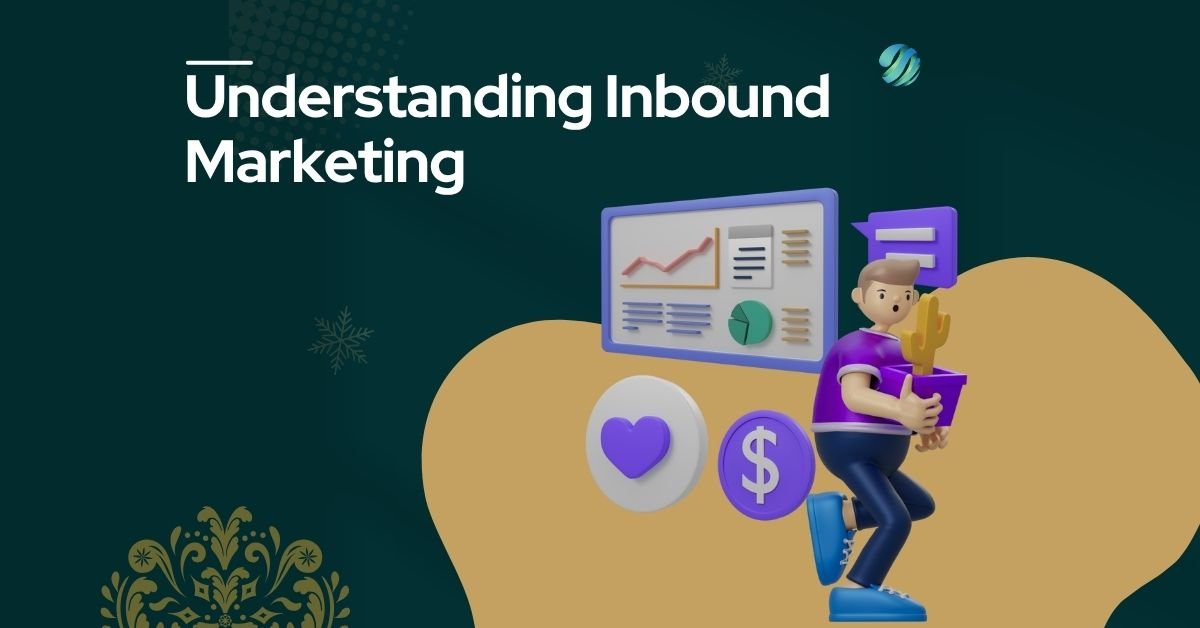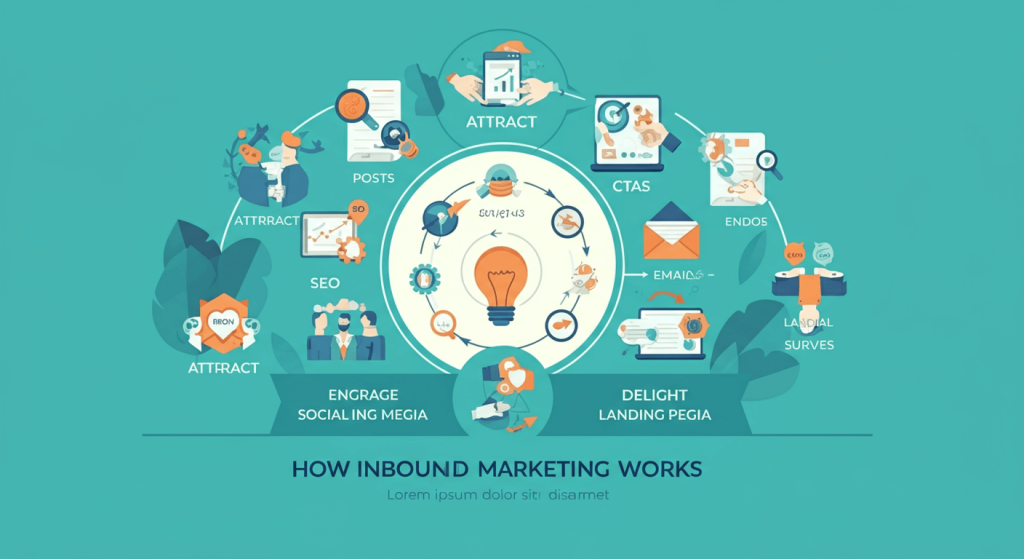
Inbound marketing is now one of the best ways to achieve meaningful growth for your business in a world where businesses are fighting for more attention on a daily basis. But what, exactly, is inbound marketing, and why is it so important?
This blog explores the definition of inbound marketing, dissects the process of it, and explains how using it can greatly change the way that companies attract, engage, and delight customers. Whether you’re new to digital marketing or seeking more powerful ways to use it, this guide will equip you with the insights you need to start.
What is Inbound Marketing?
Inbound Marketing is a customer-centric, data-driven approach to marketing that businesses use to attract potential customers into their sales funnel. Compared to typical “outbound” marketing strategies, which involve reaching out to consumers whether they want to hear from you or not (cold calls, spam emails, and interruptive ads), inbound draws interested customers to your product or service and keeps them coming back for more.
Inbound marketing helps to create trust and long-term relationships with your audience by meeting them where they are already spending time: in the online world.
Core Concepts of the Inbound Methodology

Inbound marketing principles | Inbound marketing meaning
To get a handle on the meaning of inbound marketing, it’s a good idea to break down the principles upon which it’s based.
Attract
The first step is, of course, to attract the right audience to your brand. It’s done through publishing and sharing high-quality content that is valuable and educates, and inspires your ideal audience. Typical strategies include blogging, SEO, and social media.
Engage
Once you have your audience’s attention, you need to propose solutions that cater to each individual’s specific needs. Like providing tailored services, personalized email campaigns, or an interactive tool that adds value for customers as a trusted advisor.
Delight
Third, it’s essential to foster the relationships and experience so that customers see delight in every interaction. Businesses are making this happen by providing exceptional customer service, exclusive loyalty rewards, and a steady stream of valuable content that adds value and makes it hard to resist coming back.
The Transformative Power of Inbound Marketing for Businesses
Inbound marketing is unique in that it values customer engagement and long-term relationships rather than individual sales. Here’s why it’s a business game-changer for businesses, no matter the size or industry.
Builds Trust and Credibility
Contemporary consumers are savvy and discriminating. You cannot hard-sell them, nor send them unsolicited messages. Instead, they are actively looking for sources that they can trust to help inform [their decisions]. Inbound marketing serves to position brands as the experts in their industry by continuing to provide valuable and relevant information.
Cost-effective
Inbound marketing delivers better ROI than traditional outbound marketing. Why? Because the leads you generate will convert at a higher rate, and you can always scale your campaign according to your means. HubSpot claims that inbound practices lead costs 62% less cost than leads generated by outbound practices.
Targeted Reach
Inbound marketing IS about hitting the right people at the right time. With the use of data-driven tactics such as SEO, analytics, and behavioral targeting, businesses make sure their message is heard by those who are already interested in their products or services.
Sustainable Growth
Unlike outbound campaigns that lose steam once they’re shut off, inbound marketing forms the type of base where your content is still driving traffic, leads, and conversions long after it’s been published, whether that’s for months or years.
How Inbound Marketing Works
Successful inbound marketing is achieved through a combination of methods and tools that attract, engage, and delight. So let’s examine a few of the most effective strategies utilized below.

Content Creation
Indeed, content is the workhorse of inbound marketing. Whether it’s through blog posts, videos, infographics, or podcasts, developing compelling and informative content to address your audience’s pain points and bring customers to your site. Find those pain points in any industry and then build resources that provide solutions.
Search Engine Optimization (SEO)
Nobody cares about your content if it doesn’t reach the right person. SEO enhances your web pages for keywords so that potential customers can find you and find you on search engines like Google.
Social Media Marketing
Through platforms such as Instagram, Facebook, and LinkedIn, you can tell the story of your brand and drive potential customers to your products. Social media marketing extends the reach of your content and brings you closer to your users to form a more personal relationship where you earn trust, which is crucial to building brand loyalty.
Email Marketing
Once users interact with your site, learn how to grow the relationship with an email campaign. Segmented emails according to user preferences, behavior, or purchase history, keeping businesses relevant and top of mind.
Landing Pages and Lead Generation
Inbound Marketers use landing pages in combination with calls-to-action to convert visitors into leads. For example, a good offer, such as a free ebook or a sneak preview of a service, might be all that it takes to get a user to enter their email address.
Customer Reviews and Analytics
Continual refining of your strategies requires collecting intelligence on how your customers are behaving, reacting and responding, or gleaning from your analytical tools. Today, with the aid of tools like Google Analytics or sophisticated CRM software, businesses can track progress to course-correct.
Inbound Marketing Success Stories
Still not sure if inbound marketing is for you? Below are a few examples of companies that are successfully using the practices of inbound.

HubSpot
In fact, HubSpot is a creator of inbound marketing. By building a robust library of resources such as blogs, webinars, and interactive tools, it becomes a go-to solution for businesses seeking growth.
Moz
Moz—Moz provides free educational materials, such as tutorials, case studies, and its popular “Whiteboard Friday” (see what they did there?) video series. This approach has placed it in a leading position in the appliance industry.
Patagonia
The outdoor retailer uses storytelling and social media to appeal to eco-conscious consumers. While building a strong community around a brand, thanks to inspiring campaigns and a vigilant environmental policy.
Breaking Down the Basics of Inbound Marketing
If you are ready to put inbound marketing and its benefits to work for you, the following is a list of how to get started.
-
Has the element of elements? That is to say, in recent years, you first describe a product.
-
Develop a publishing schedule in order to have a steady stream of resources that are of value.
-
Invest in analytics and CRM platforms to capture engagement and conversions.
-
Get your website in great shape for visibility and usability.
-
Stay true to providing value instead of just promoting yourself.
Just keep in mind, inbound marketing is a marathon and not a sprint. If you do the work to continually create engaging and valuable content, you’ll strengthen your worth as a trusted thought leader in your space.
Create Success in Inbound Marketing
Inbound marketing is no longer a marketing strategy, it’s a new way of doing business to reach and connect with people you want to serve and build collaborative, authentic, and long-term trust-oriented relationships with. By focusing on value, trust, and engagement, you’re laying the groundwork for sustainable, customer-led growth.
Now it’s time for you to get going. What is the most interesting thing for you about inbound marketing? Have any thoughts or questions — post in the comments section (we read ’em!)
Leave a Reply